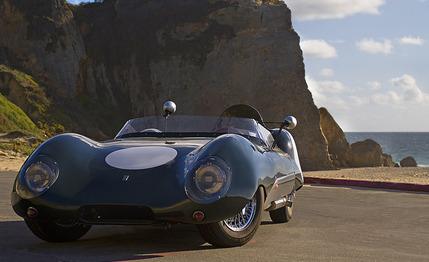 Specialty File
Specialty File
Although it is true that you can never go back, sometimes the past comes forward for a little clowning around. Such is the case with the Westfield XI, an immensely entertaining, tail-sliding, 1160-pound English kit car with no other mission or use than to relive some very old, very fun times.
A younger and lesser-known Colin Chapman built about 270 of the original Lotus Elevens from 1956 to 1958. The lumpy sheet-aluminum body and the tubular-steel space frame weighing less than 70 pounds were design highlights, along with an 1100cc Coventry Climax engine. A racer from the road to its nonexistent roof, it won laurels in English and American club racing and class victories at Le Mans and Sebring. Originals with racing pedigrees sell for hundreds of thousands.
In 1982, engineer Chris Smith started a company near Birmingham, England, to produce a replica kit. Westfield Sportscars, which makes Lotus 7 kits as well as a Suzuki Hayabusa–powered sports racer called the XTR, has been in and out of the XI business as demand has waxed and waned. Now, with European old-timer leagues allowing Westfield XIs spots on grids, demand is up, and the factory is again turning out kits.
The basic kit—including the steel-tube frame, front-control-arm suspension, coolant plumbing, brake lines, seats, and fiberglass bodywork with your choice of color prebaked into the gel coat—runs $19,900 shipped to New Jersey (add another $850 to forward it to, say, Los Angeles, says U.S. distributor Tom McClintock of Manik Technologies in Richardson, Texas). There are options, too, including a $1052 five-speed conversion kit and a $504 Le Mans–style fairing hump. Figure about $32,000 for a basic runner.
The powertrain, the radiator, the steering rack, the gauges, the wiring harness, the wheels and tires, and the rear axle are up to the builder, although the kit is designed around commonly available MG Midget and Austin-Healey Sprite running gear. Modern engines are eschewed, as any unit taller than the MG’s compact 1275cc-series four-cylinder won’t fit easily under the hood. McClintock quotes 200 hours of assembly time, depending on builder experience. The only welding required fits the trailing-arm brackets to the rear-axle housing.
All this old-fashioned hardware gives a thoroughly old-fashioned experience. The sill-hinged doors swing out like those of an old fighter plane, and climbing aboard is easy, especially with the optional removable steering wheel. Our tester was a good example of the vintage vibe Smith must have been after, with a 1275 bored out to 1329cc and making 74 horsepower through a five-speed Ford Sierra transmission. Antique Smiths gauges complete the time warp.
The single side pipe snarls menacingly on startup, and the Westfield tears off, ready to play with its quick steering and a torque-infused throttle that swings out the tail effortlessly. A 60-mph sprint of 9.3 seconds feels much quicker in a car that places butts just inches above the asphalt. Panic braking on the 165/80 Kumhos was white-knuckle.
We drove several Westfields, the best producing more than 100 horsepower and fitted with a Datsun five-speed that is two-finger flickable. The Ford Type 9 gearbox in our track tester was balky but at least provided an easy 75-mph cruising speed. The suspension proved unexpectedly supple on the freeway flog to our favorite mountain roads, and the wraparound windscreen gives ample shielding from wind if not rain. Be prepared for swarms of gawkers. The Westfield may be a replica, but the smiles are 100-percent genuine.
Manik Technologies, 819 Arapaho Village, Suite 24B, No. 164, Richardson, Texas 75080; 972-358-1460; www.westfieldeleven.com.